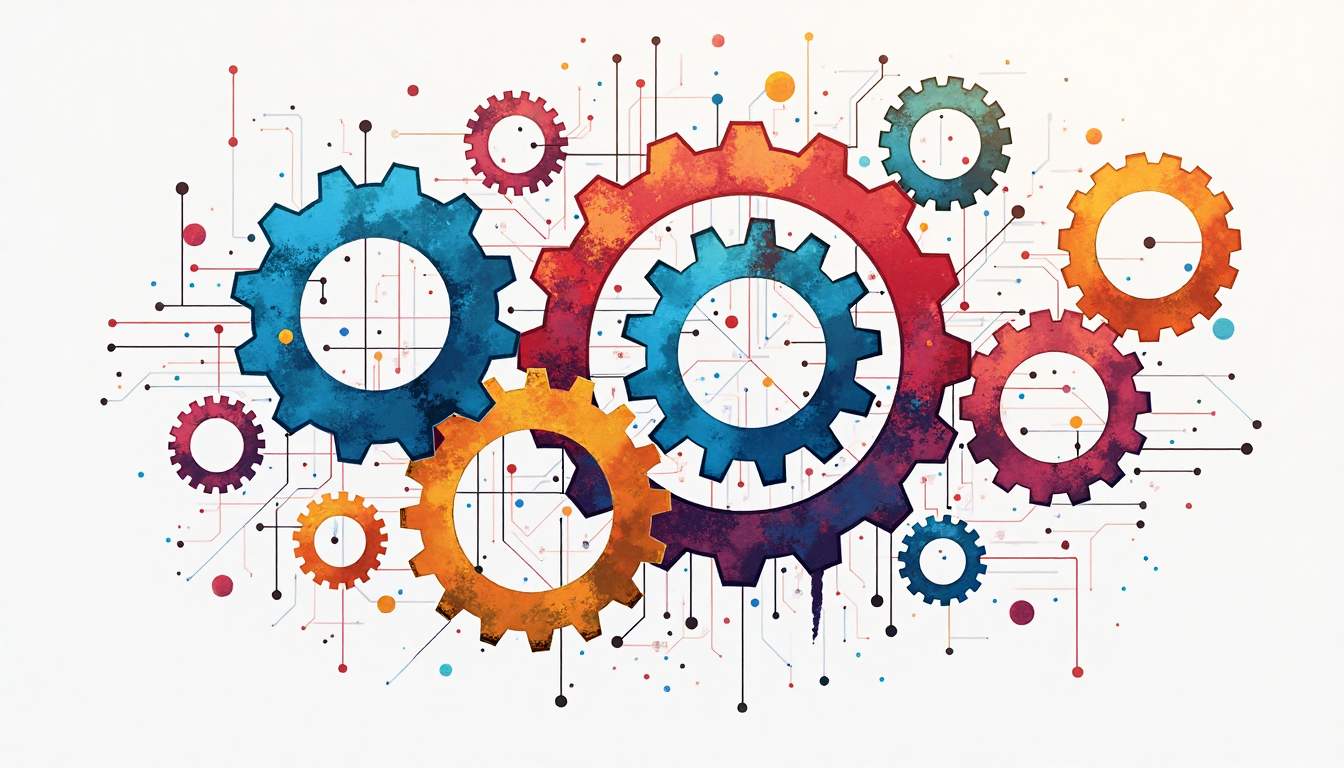Agentic AI Development Frameworks: Choosing the Right Tools
As artificial intelligence continues to evolve, the rise of agentic AI—systems capable of autonomous decision-making and goal-oriented behavior—has transformed the landscape of software development. Building these intelligent agents requires specialized frameworks that not only support complex algorithms but also facilitate scalability, robustness, and maintainability. Choosing the right development tools is critical to the success of any agentic AI project, whether it’s for autonomous vehicles, intelligent personal assistants, or advanced robotics.
This article explores the essential aspects of selecting and working with agentic AI development frameworks. From comparing popular frameworks to setting up your development environment, structuring projects, testing, deployment, monitoring, and maintenance, this comprehensive guide will help developers and organizations make informed decisions and optimize their AI development workflows.
Framework Comparison and Selection
Agentic AI development frameworks vary widely in their capabilities, programming language support, community backing, and integration options. When selecting a framework, it’s crucial to consider the specific needs of your project, such as the complexity of the agent’s decision-making processes, real-time requirements, and the target deployment environment. Each framework comes with its own set of strengths and weaknesses, which can significantly influence the performance and scalability of the AI agents you intend to develop.
Popular frameworks like OpenAI’s Gym provide a rich environment for reinforcement learning, which is foundational for many agentic AI systems. Meanwhile, platforms such as Microsoft’s Bot Framework excel in conversational AI, enabling the creation of intelligent agents that interact naturally with users. For robotics and autonomous systems, the Robot Operating System (ROS) offers a modular and flexible framework with extensive hardware integration. The choice of framework can also affect the ease of implementing advanced features such as natural language processing, machine vision, or sensor fusion, which are often crucial for creating sophisticated agentic behaviors.
Another critical factor is the framework’s support for multi-agent systems, where multiple agents interact or collaborate. Frameworks like JADE (Java Agent DEvelopment Framework) specialize in this area, providing tools for agent communication, coordination, and lifecycle management. Additionally, the choice between open-source and commercial frameworks can impact licensing costs, customization options, and community support. Open-source frameworks often benefit from a collaborative development environment, allowing for rapid innovation and a wealth of shared resources, while commercial frameworks may offer more robust support and documentation, which can be invaluable for enterprise-level applications.
Ultimately, the selection process should involve evaluating the framework’s documentation quality, active user community, and compatibility with existing infrastructure. Conducting small-scale prototypes or proof-of-concept projects can also help determine which framework aligns best with your project goals. Furthermore, it’s advisable to consider the long-term viability of the framework, including its update frequency and the responsiveness of its maintainers to emerging technologies and user feedback. As the field of AI continues to evolve, frameworks that adapt quickly to new advancements will be better positioned to support innovative applications and maintain relevance in a competitive landscape.
Development Environment Setup
Setting up an efficient development environment is foundational to productive agentic AI development. This involves selecting the right integrated development environment (IDE), configuring version control systems, and installing necessary dependencies and libraries.
Python has become the lingua franca of AI development due to its extensive ecosystem of machine learning libraries like TensorFlow, PyTorch, and scikit-learn. IDEs such as Visual Studio Code and PyCharm offer excellent support for Python, including debugging tools, code linting, and integration with containerization platforms like Docker. Moreover, the rich ecosystem of plugins available for these IDEs can enhance productivity by providing features like code snippets, syntax highlighting for various languages, and integration with cloud services for seamless deployment.
Containerization is particularly valuable in agentic AI projects to ensure consistency across development, testing, and deployment environments. Tools like Docker and Kubernetes facilitate the creation of reproducible environments, allowing teams to avoid the "works on my machine" problem and streamline collaboration. This approach not only simplifies dependency management but also enhances scalability, enabling developers to spin up or down instances of their applications as needed, which is crucial for handling varying workloads in AI applications.
Additionally, setting up continuous integration and continuous deployment (CI/CD) pipelines early in the development process can automate testing and deployment, reducing errors and accelerating iteration cycles. Platforms like GitHub Actions, Jenkins, and GitLab CI/CD are popular choices that integrate seamlessly with many AI frameworks. These tools allow teams to implement automated testing strategies, ensuring that code changes do not introduce new bugs, and enabling faster feedback loops. Furthermore, incorporating code quality checks and performance monitoring into the CI/CD pipeline can help maintain high standards throughout the development lifecycle.
Furthermore, adopting a robust project management tool can greatly enhance team collaboration and communication. Tools like Jira, Trello, or Asana help in tracking progress, assigning tasks, and managing deadlines, which is particularly important in complex AI projects that often involve multiple stakeholders and interdisciplinary teams. By integrating these project management tools with version control systems, teams can maintain a clear overview of project milestones and ensure that everyone is aligned on goals and deliverables. This holistic approach not only fosters a more organized workflow but also promotes accountability and transparency within the team.
Project Structure Best Practices
Organizing your agentic AI project with a clear and maintainable structure is essential for scalability and collaboration. A well-defined project layout helps developers understand code responsibilities, facilitates testing, and simplifies future enhancements.
A common best practice is to separate core components such as data processing, model training, agent logic, and user interfaces into distinct modules or packages. For instance, the data pipeline that handles input preprocessing and feature extraction should be isolated from the agent’s decision-making algorithms. This modularity enables independent development and testing of each component.
Incorporating configuration files (e.g., YAML or JSON) to manage hyperparameters, environment settings, and deployment options promotes flexibility and reduces hard-coded values. Using environment variables for sensitive information like API keys ensures security and portability.
Documentation within the project, including README files, inline comments, and architectural diagrams, is invaluable for onboarding new team members and maintaining knowledge continuity. Adopting coding standards and style guides, such as PEP 8 for Python, further enhances code readability and consistency.
Testing Frameworks
Robust testing is vital for agentic AI systems, where unpredictable behaviors can arise from complex interactions and learning processes. Unlike traditional software, AI agents require not only unit tests for individual functions but also integration tests that evaluate the agent’s performance in simulated or real environments.
Unit testing frameworks like pytest (for Python) provide a foundation for verifying the correctness of individual components such as data transformations, utility functions, and model interfaces. Mocking and stubbing techniques can simulate external dependencies, enabling isolated testing.
For higher-level testing, simulation environments are indispensable. Tools such as OpenAI Gym or Unity ML-Agents allow developers to create controlled scenarios in which agents can be evaluated against predefined benchmarks. These simulations help detect issues like suboptimal policies, unintended behaviors, or failure to generalize.
Performance testing is also critical, especially for real-time agentic AI applications. Profiling tools can measure latency, memory usage, and throughput, guiding optimizations that ensure agents operate efficiently under production constraints.
Deployment Tools
Deploying agentic AI systems involves packaging models, agent logic, and supporting services into environments that can run reliably and scale as needed. The choice of deployment tools depends on factors such as target platforms, latency requirements, and integration with existing infrastructure.
Cloud platforms like AWS, Azure, and Google Cloud offer managed AI services and container orchestration capabilities that simplify deployment and scaling. Leveraging serverless architectures can reduce operational overhead by automatically managing resource allocation based on demand.
For edge deployments—common in robotics and IoT applications—tools like NVIDIA Jetson or Intel OpenVINO enable optimized inference on resource-constrained devices. Additionally, frameworks such as TensorFlow Lite facilitate running AI models efficiently on mobile and embedded platforms.
Containerization remains a cornerstone of modern deployment strategies. Docker images encapsulate the entire runtime environment, ensuring consistency across development, staging, and production. Kubernetes provides powerful orchestration features, including load balancing, rolling updates, and self-healing, which are invaluable for maintaining uptime and reliability.
Monitoring Solutions
Once deployed, continuous monitoring of agentic AI systems is essential to detect anomalies, performance degradation, and unintended behaviors. Monitoring provides insights that enable proactive maintenance and iterative improvements.
Logging frameworks should capture detailed information about agent decisions, input data, and system metrics. Tools like ELK Stack (Elasticsearch, Logstash, Kibana) or Grafana paired with Prometheus enable real-time visualization and alerting based on custom thresholds.
Monitoring AI-specific metrics such as model confidence scores, reward signals, and drift detection helps identify when agents deviate from expected behavior or when data distributions shift. This is particularly important in dynamic environments where agents continuously learn and adapt.
Integrating monitoring with automated feedback loops can trigger retraining or rollback procedures, minimizing downtime and ensuring the agent remains aligned with desired objectives. Furthermore, compliance with ethical guidelines and regulatory requirements often mandates transparent monitoring and auditing capabilities.
Maintenance Strategies
Maintaining agentic AI systems is an ongoing challenge due to their evolving nature and the complexity of their operating environments. Effective maintenance strategies combine technical, organizational, and procedural approaches to sustain performance and reliability.
Regular retraining schedules, informed by monitoring data, help keep models up to date with changing conditions and prevent performance drift. Version control for models and datasets, alongside code repositories, ensures traceability and reproducibility of changes.
Establishing a clear incident response plan is critical for addressing unexpected failures or ethical concerns swiftly. This includes defining roles and responsibilities, communication protocols, and rollback mechanisms.
Moreover, fostering a culture of continuous learning within development teams encourages the adoption of best practices, exploration of new techniques, and proactive identification of potential risks. Documentation and knowledge sharing play a vital role in preserving institutional memory and facilitating smooth transitions as teams evolve.
In conclusion, selecting the right agentic AI development frameworks and tools is a multifaceted process that impacts every stage of the AI lifecycle. By carefully evaluating frameworks, setting up robust environments, adhering to best project structures, implementing thorough testing, leveraging effective deployment and monitoring solutions, and adopting sound maintenance strategies, organizations can build intelligent agents that are reliable, scalable, and aligned with their goals.






